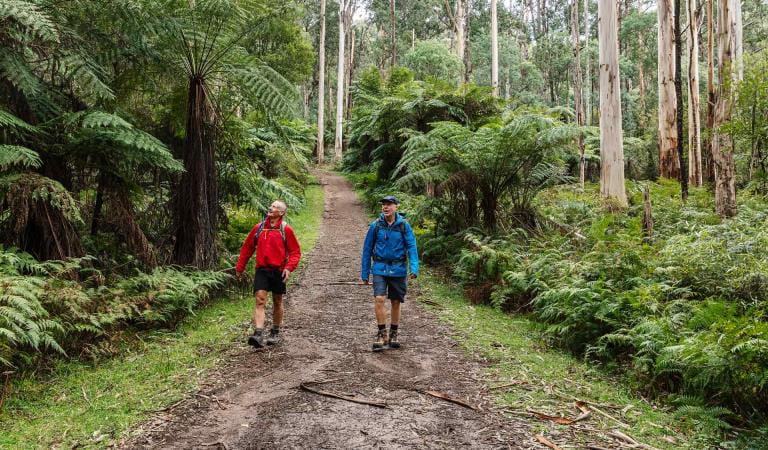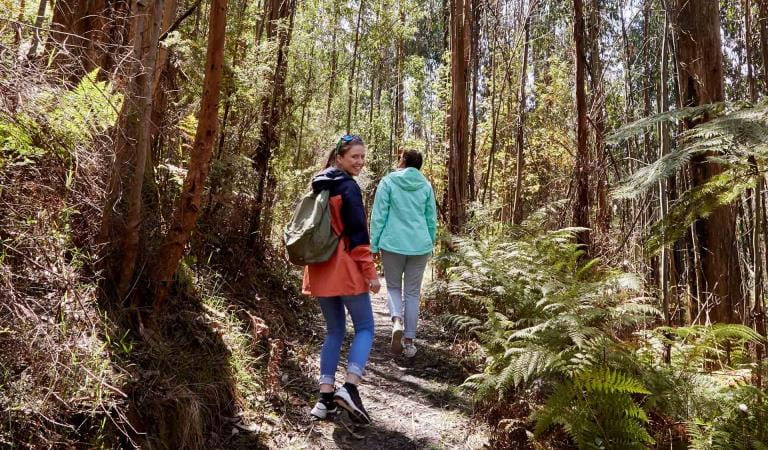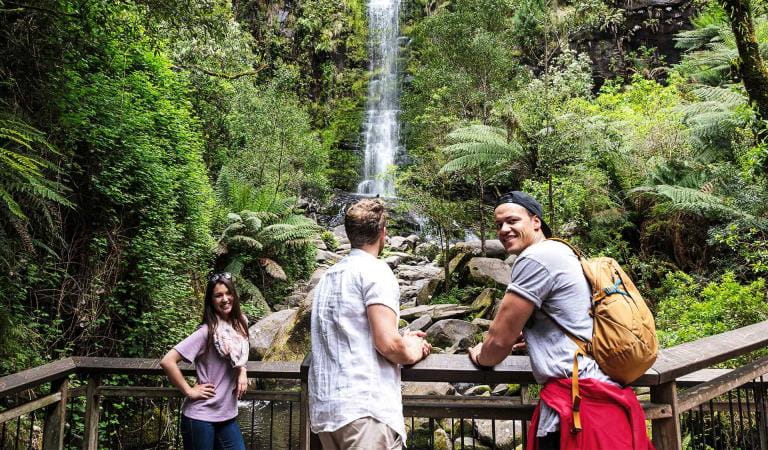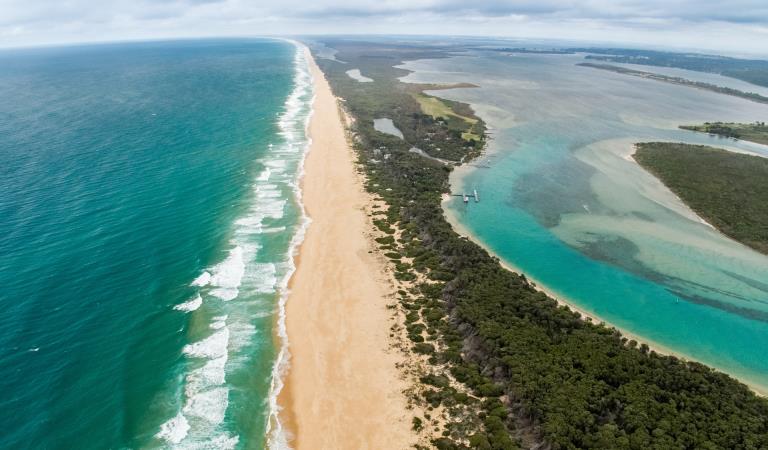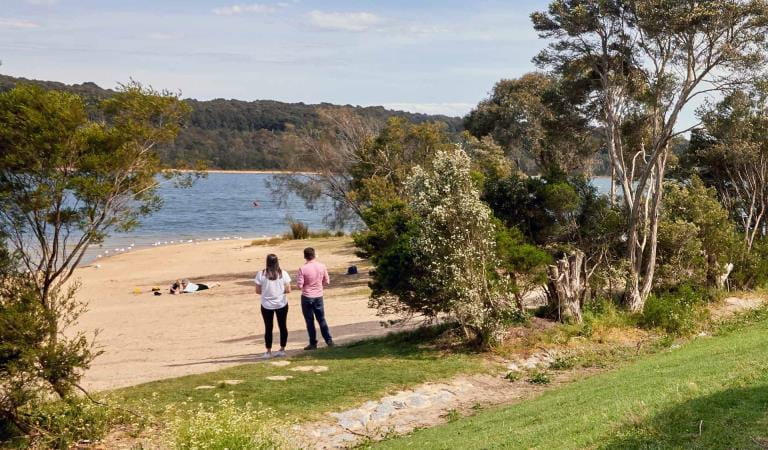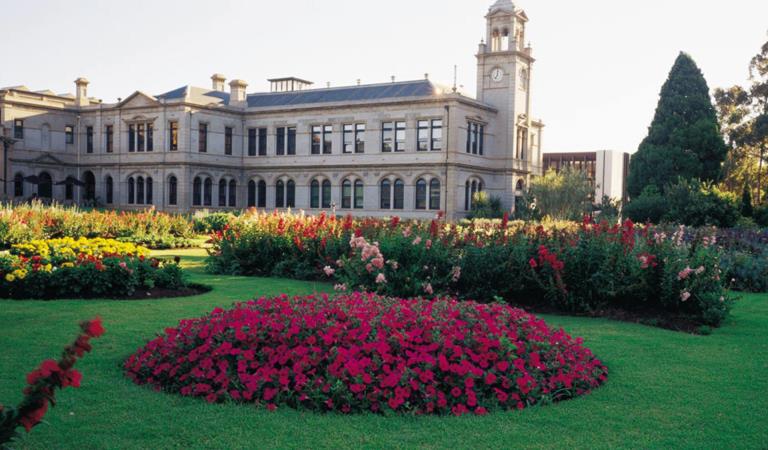Discover Victoria's Parks
We all love getting into nature and exploring Victoria's parks — but do you know what makes a national park different to a state park? Or why we have marine national parks and marine sanctuaries? Learn about our wonderful parks and find one that's perfect for you.
Witness native plants and animals and places of cultural and historical significance in our national and state parks. Discover marine environments at marine national parks and marine sanctuaries. Enjoy your favourite activities with friends and family at regional and metropolitan parks.
National Parks
National parks provide the highest level of protection to diverse natural areas. You'll usually find the best and most unique examples of our natural values and biodiversity in national parks. They allow us to enjoy a range of activities in places of incredible beauty.
Dandenong Ranges National Park
Protecting the tall forests of the Dandenongs, this park is well known for its spectacular Mountain Ash trees and lush fern gullies, and is ideal for relaxing picnics and tranquil forest walks.
Kinglake National Park
Only 65 km north of Melbourne, Kinglake National Park lies on the slopes of the Great Dividing Range, offering dramatic views of the Melbourne skyline, Port Phillip Bay, the Yarra Valley and across to the You Yangs.
Lake Eildon National Park
Lake Eildon National Park is in the northern foothills of Victoria's Central Highlands, 150 km north-east of Melbourne. Situated on the shores of Lake Eildon, the park protects 27,750 ha of rugged hills with open woodlands through to dense forest.
Wilsons Promontory National Park
Welcome to Wilsons Prom, the southernmost tip of mainland Australia. Walk remote coastal bushland trails and swim at pristine beaches dominated by granite tors. Camp in comfort at family-friendly Tidal River or hike to a more secluded campsite
Baw Baw National Park
Covering a substantial part of the Baw Baw Plateau and sections of the Thomson and Aberfeldy River valleys, Baw Baw National Park offers colourful wildflowers in early summer and open grassy plains with Snow Gum woodlands.
Great Otway National Park
The park features rugged coastlines, sandy beaches, rock platforms and windswept heathland. In the north, the park features tall forests, ferny gullies, magnificent waterfalls and tranquil lakes.
Grampians National Park
Rising abruptly from the surrounding Western Plains, the Grampians (Gariwerd) is a series of rugged sandstone mountain ranges and forests rich in wildlife. One of Victoria’s most popular holiday destinations, the park is a great venue for camping, climbing, scenic drives, bushwalks and nature study.
Alpine National Park
The Alpine National Park is an adventure-lover’s dream. Hike Victoria’s highest mountain ranges, explore wildflower draped landscapes on horseback or head out on world-class mountain bike trails
State Parks
State parks help protect our state's natural values. This makes them very similar to national parks. However, the conservation values and landscapes they protect are smaller or less diverse. They're often not as well-known as national parks but have fantastic bushwalking trails and views. They can be a quieter way to enjoy the incredible rugged beauty of nature.
Lerderderg State Park
The Lerderderg River has carved a deep and picturesque gorge through this rugged park located within easy reach of Melbourne, Bacchus Marsh and Ballarat. Picnic at Shaws Lake or O'Briens Crossing, follow an old water race and hike part of the Great Dividing Trail, or simply stroll along the river from Mackenzies Flat.
Bunyip State Park
Escape where you can breathe fresh air and enjoy native plants and animals. See a mosaic of green from heathland on river plains to Mountain Ash forest covering steep slopes.
Arthurs Seat State Park
Rising above the Mornington Peninsula, Arthurs Seat State Park is a prominent feature in the landscape of Port Philip Bay.
Cathedral Range State Park
The Cathedral Range is a spectacular seven km ridge of sharply upturned sedimentary rock.
Mount Arapiles-Tooan State Park
Mount Arapiles – known as Dyurrite – is a spectacular feature, rising sharply from the Wimmera plains to form part of the Mount Arapiles-Tooan State Park.
Marine National Parks
Like our national parks on land, marine national parks protect areas of natural value. Established in 2002, marine national parks protect unique and diverse underwater environments, as well as cultural and heritage features. Marine national parks are no-take areas, thus activities like fishing are not permitted.
Wilsons Promontory Marine National Park
This marine park consists of extensive sandy beaches, seagrass meadows, rocky reefs and offshore islands.
Ninety Mile Beach Marine National Park
Located 30km south of Sale and adjacent to Gippsland Lakes Coastal Park, this park covers 5km of coastline. This untamed stretch of coastline runs alongside the slender strip of sand dunes that protect the Gippsland Lakes.
Port Phillip Heads Marine National Park
Port Phillip Heads Marine National Park is made up of six separate marine areas around the southern end of Port Phillip. A high proportion of Victorian species of marine flora and fauna are represented in the Port Phillip Head's region.
Churchill Island Marine National Park
Located south of Rhyll, Churchill Island Marine National Park is a popular spot for bird watching. Many birds feed, roost and breed around the bay and you may be able to spot birds that have migrated from across the globe. Canoeing, yachting, snorkelling and diving also popular ways to explore the park.
Marine Sanctuaries
Marine Sanctuaries are also very important for conservation purposes. These highly protected areas that are smaller in size than marine national parks. Marine sanctuaries protect distinct features such as reef platforms, marine education or important diving locations.
Ricketts Point Marine Sanctuary
Crystal clear shallow waters, sandstone reefs, sea caves, and rockpools make Ricketts Point the perfect place to discover the wonderful sea creatures of Port Phillip Bay.
Barwon Bluff Marine Sanctuary
Located near the mouth of the Barwon River, Barwon Bluff Marine Sanctuary protects 17 hectares of reef and sea life. Featuring a diversity of habitats in a small area, it makes an excellent spot for learning about local marine life by exploring the rock platforms and beaches on an organised or self-guided tour.
Mushroom Reef Marine Sanctuary
Teeming with marine life from colourful anemones to the rare Black and White Sea Star, Mushroom Reef Marine Sanctuary is a fascinating place to explore. At low tide, a magnificent mushroom-shaped reef is exposed to reveal an intricate honeycomb of bays and pools.
Point Cooke Marine Sanctuary
Point Cooke Marine Sanctuary is situated on the sheltered rocky shores of north-western Port Phillip Bay. Protecting 290ha of shoreline, it's the largest of Victoria's marine parks and sanctuaries. The sandy beaches, rocky reefs and mudflats are home to a diversity of marine and coastal life.
Regional Parks
Regional parks are found close to urban centres or major tourist routes. While still places of natural beauty, visitor recreation is the primary purpose of regional parks. This makes them the perfect spot to enjoy a wider range of your favourite activities. For example, walking your dog, mountain biking, cycling or horse riding. Remember, different rules may apply to what is permitted in each park, so make sure to check which activities are allowed before you visit.
You Yangs Regional Park
Magnificent views, birdlife and a mecca for walkers, horse riders and mountain bikers - welcome to the You Yangs! The distinctive granite peaks of this park rise abruptly from the flat plains below. Flinders Peak and Big Rock have panoramic views out to Melbourne, which is just an hour away.
Woowookarung Regional Park
A park by the people, for the people - come and explore; walk, ride, drive, relax, gather and picnic.
Macedon Regional Park
A beautifully scenic forested mountain-ridge the Macedon Ranges host forested walking tracks, shady picnic areas and stunning lookouts. The Mount Macedon War Memorial Cross dominates the surrounding landscape while scenic drives link the park to the cafes and restaurants of the surrounding towns and villages.
Metropolitan Parks
Location and recreation are the most important features of metropolitan parks. They are very similar to regional parks, however, are located in metropolitan Melbourne. These parks are great for exercise, whether you prefer walking, running or cycling. In some cases, dogs are also allowed. They're the perfect spot to gather with friends and enjoy a picnic or barbecue.
Jells Park
Jells Park is nestled in the Dandenong Creek Valley, Wheelers Hill, away from the hustle and bustle of urban life. The park attracts over 900,000 visitors a year, with over nine kilometres of paths and trails, 127 hectares of wide open spaces and enough picnic areas for everyone to enjoy.
Albert Park
Jog, cycle or walk with your dog around Albert Park Lake - just 3km from the centre of Melbourne. And when you stop to catch your breath, take a moment to enjoy the magnificent views of the city skyline.
Yarra Bend Park
Yarra Bend Park is Melbourne’s largest natural bushland park. Enjoy the leafy grounds and abundant wildlife while strolling or biking its many trails. Stop for a picnic, walk your dog or play a round of golf.
Lysterfield Park
Rising from the southern foothills of the Dandenong Ranges, Lysterfield Park is the perfect place to explore nature with friends with a huge variety of recreational activities.
Werribee Park
Visit Werribee Park and discover the story of an Australian pastoral empire.
Explore the Victorian era in the Italianate-style architecture and interiors of Werribee Mansion.
Stroll through 10 hectares of beautiful formal gardens and open space park land. Only 30 minutes from Melbourne, take a walk at Werribee Park, today.


